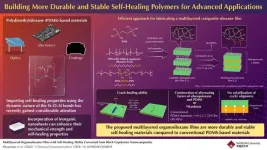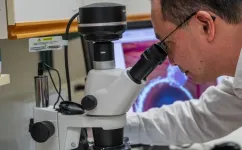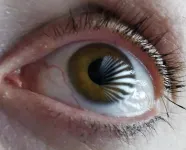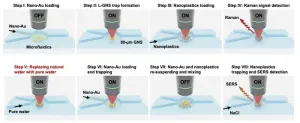(Press-News.org) A study of the use of AI by a Russian-backed propaganda outlet shows how AI allows propagandists to increase their production capacity without any loss in persuasive power. In December 2023, journalists at the BBC and Clemson University’s Media Forensics Hub published an investigation revealing that the site DCWeekly.org was a Russian propaganda outlet, part of a broader network disseminating pro-Kremlin and anti-Ukrainian narratives. Morgan Wack and colleagues found that prior to September 20, 2023, much of the content on the site was simply lifted from other right-leaning outlets. After that date, however, the stories were generally rewritten by AI, allowing the site to use a broader range of sources but with the tone and emphasis tweaked to better suit likely aims of the propagandists. The authors examined 22,889 articles published on the site before and after the shift—but before the site’s true motives were exposed. By leveraging the timing of its adoption, the research team shows how AI allowed the propagandists behind the site to more than double their rate of publication, as compared to their most active pre-AI period. The use of AI by DCWeekly also corresponded with an increase in the breadth of topics covered on the site, which ranged from Russia’s purported successes in Ukraine to the tyranny of gun control legislation in the United States. As a final step, the authors conducted a survey of 880 American adults recruited through the online survey platform Prolific and found that the content in the post-adoption period maintained the same level of persuasiveness as the pre-AI period. According to the authors, immediate action should be taken to mitigate the influence of AI-assisted propaganda campaigns.
END
AI propaganda: prolific and persuasive
2025-04-01
ELSE PRESS RELEASES FROM THIS DATE:
An efficient self-assembly process for advanced self-healing materials
2025-04-01
Polysiloxane materials, such as polydimethylsiloxane (PDMS)-based elastomers, exhibit a self-healing capability by the introduction of silanolate (Si–O–) groups. This ability stems from their dynamic siloxane (Si–O–Si) bonds, which can break and reform to repair damage. Their self-healing properties could make them valuable in applications like protective coatings for use in various fields, such as optics, electronics, and aerospace.
To improve the properties of PDMS-based materials, they have been combined with inorganic fillers such as nanoparticles or nanosheets. Generally, the introduction of nanosheets into polymers leads to the formation of ...
Study reveals stark racial disparities in IBD care across the united states
2025-04-01
New York, NY – April 1, 2025- A study published today in the American Journal of Gastroenterology reveals significant disparities in healthcare utilization among racial and ethnic groups with inflammatory bowel disease (IBD) in the United States. The research, funded by the Centers for Disease Control and Prevention (CDC), led by investigators from the University of Pennsylvania, the University of North Carolina at Chapel Hill, and the Crohn's & Colitis Foundation provides crucial insights into the challenges faced by underrepresented communities ...
Break the sedentary cycle: National Walking Day can kickstart healthier routines
2025-04-01
DALLAS, April 1, 2025 — Sedentary behavior has become a national health crisis, with 1 in 4 U.S. adults sitting for more than eight hours a day, increasing their risk for heart disease, stroke, and mental health challenges, according to the Centers for Disease Control and Prevention. To help people move more, the American Heart Association, a global force changing the future of health of all, invites communities nationwide to walk together on Wednesday, April 2.
Adopting healthier routines doesn’t have to be intimidating or overwhelming according to Eduardo Sanchez MD, MPH, FAHA, the ...
Researchers develop new way to match young cancer patients with the right drugs
2025-04-01
A pan-Canadian team has developed a new way to quickly find personalized treatments for young cancer patients, by growing their tumours in chicken eggs and analyzing their proteins.
The team, led by researchers from the University of British Columbia and BC Children’s Hospital Research Institute, is the first in Canada to combine these two techniques to identify and test a drug for a young patient's tumour in time for their treatment.
Their success in finding a new drug for the patient, described today in EMBO Molecular Medicine, shows how the study of proteins, known as proteomics, ...
New 3D technology paves way for next-generation eye-tracking
2025-04-01
Eye tracking plays a critical role in the latest virtual and augmented reality headsets and is an important technology in the entertainment industry, scientific research, medical and behavioral sciences, automotive driving assistance and industrial engineering. Tracking the movements of the human eye with high accuracy, however, is a daunting challenge.
Researchers at the University of Arizona Wyant College of Optical Sciences have now demonstrated an innovative approach that could revolutionize eye-tracking ...
Diagnosing a dud may lead to a better battery
2025-04-01
It’s (going to be) electric.
But how soon? How quickly our society can maximize the benefit of electrification hinges on finding cheaper, higher performance batteries — a reality closer to hand through new research from Virginia Tech.
A team of chemists led by Feng Lin and Louis Madsen found a way to see into battery interfaces, which are tight, tricky spots buried deep inside the cell. The research findings were published on April 1 in the journal Nature Nanotechnology.
“There are major, longstanding challenges at the interfaces,” ...
We know nanoplastics are a threat—this new tool can help us figure out just how bad they are
2025-04-01
April 1, 2025
AMHERST, Mass. – While the threat that microplastics pose to human and ecological health has been richly documented and is well known, nanoplastics, which are smaller than one micrometer (1/50th the thickness of an average human hair), are far more reactive, far more mobile and vastly more capable of crossing biological membranes. Yet, because they are so tiny and so mobile, researchers don’t yet have an accurate understanding of just how toxic these particles are. The first step to understanding the toxicology of nanoplastics is to build a reliable, ...
Mpox could become a serious global threat, scientists warn
2025-04-01
Mpox has the potential to become a significant global health threat if taken too lightly, according to scientists at the University of Surrey.
In a letter published in Nature Medicine, researchers highlight how mpox – traditionally spread from animals to humans – is now showing clear signs of sustained human-to-human transmission.
Mpox is a viral infection caused by a virus that belongs to the same family as smallpox. The virus can cause a painful rash, fever, and swollen glands and, in some cases, lead to more serious illness. Mpox usually spreads through ...
Combination immunotherapy shrank a variety of metastatic gastrointestinal cancers
2025-04-01
A new form of tumor infiltrating lymphocyte (TIL) therapy, a form of personalized cancer immunotherapy, dramatically improved the treatment’s effectiveness in patients with metastatic gastrointestinal cancers, according to results of a clinical trial led by researchers at the National Institutes of Health (NIH). The findings, published April 1, 2025 in Nature Medicine, offer hope that this therapy could be used to treat a variety of solid tumors, which has so far eluded researchers developing cell-based ...
Newborn warty birch caterpillars defend the world’s smallest territory
2025-04-01
Real estate is precious. Some creatures defend territories extending over several kilometres, but when Jayne Yack (Carleton University, Canada) encountered miniature newborn warty birch caterpillars (Falcaria bilineata) she wondered if she might have discovered one of the world’s smallest, and youngest, territorial critters. ‘We had noticed that tiny warty birch caterpillars produced vibrations’, says Yack, who first encountered the feisty little creatures in 2008. She also noticed that the tiny caterpillars – 1 to 2 mm long – reside in solitude on birch leaves, making her speculate whether they ...





